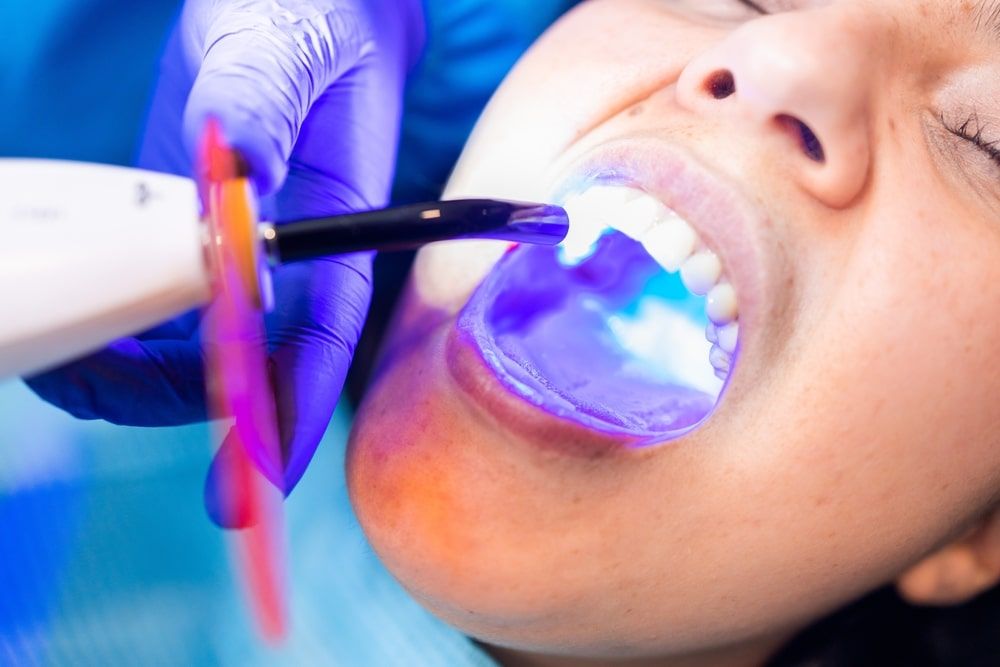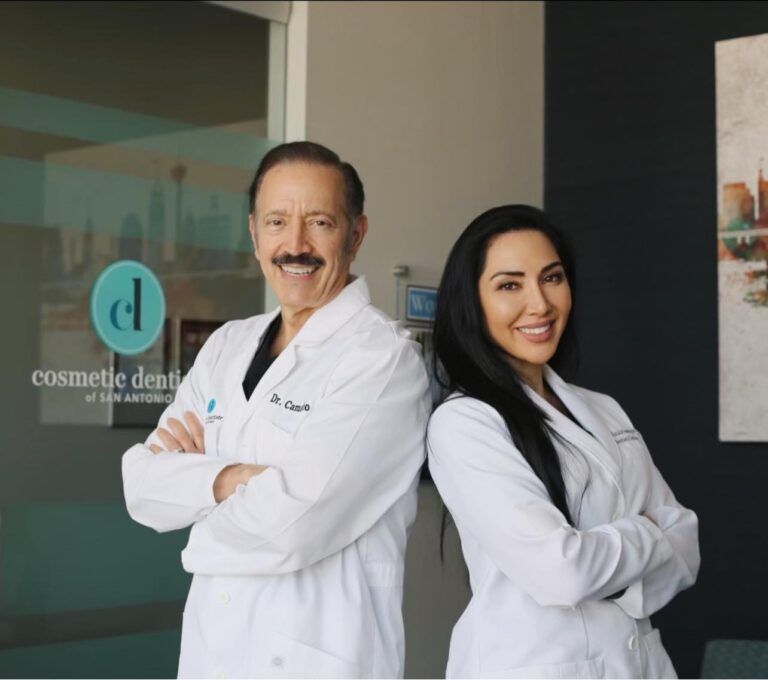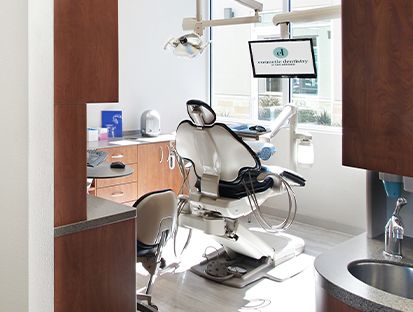Composite resin has revolutionized modern dentistry, offering a versatile and aesthetically pleasing solution for various dental needs. As advancements in dental materials continue to progress, composite resin stands out for its remarkable ability to restore and enhance the natural appearance of teeth. Whether it’s for fillings, bonding, veneers, or other restorative procedures, composite resin provides a minimally invasive, durable, and cost-effective option that benefits both patients and dental professionals. In this blog, we will explore the numerous advantages of composite resin and why it has become a preferred choice in contemporary dental practices.
What is Composite Resin?
Composite resin is a tooth-colored material composed of a mixture of fine glass or quartz particles and a plastic resin. This advanced dental material is used extensively in modern dentistry for its superior aesthetic and functional properties. The resin component gives it the necessary flexibility and workability, while the glass or quartz particles provide strength and durability.
Historically, dental materials like amalgam and gold were used for restorations, but they often compromised aesthetics and sometimes required more invasive procedures. With the advent of composite resin in the 1960s, dentistry saw a significant shift towards more conservative and visually appealing restorations. Over the years, continuous improvements have been made in the formulation of composite resins, enhancing their durability, color stability, and overall performance.
Composite resin is available in various shades, allowing dentists to perfectly match the natural color of the patient’s teeth. This makes it an ideal choice for restoring both the front and back teeth where aesthetic considerations are paramount. Additionally, its ability to bond directly to the tooth structure enables dentists to perform minimally invasive procedures, preserving more of the natural tooth and promoting long-term oral health.
The Benefits of Composite Resin
Versatility
Composite resin’s versatility is one of its most significant advantages in modern dentistry, making it a preferred material for various dental procedures. Its adaptability allows it to be used in numerous restorative and cosmetic treatments, providing solutions that meet both functional and aesthetic demands. Composite resin has various applications in cosmetic dentistry, including:
- Fillings: Composite resin is commonly used for dental fillings, particularly for cavities in visible areas. Unlike traditional amalgam fillings, composite resin fillings blend seamlessly with the natural tooth color, making them virtually indistinguishable from the surrounding tooth structure.
- Bonding: Dental bonding is a procedure where composite resin is applied to repair chipped, cracked, or discolored teeth. The resin is molded and shaped to match the natural contours of the tooth, providing a quick and effective solution for minor cosmetic issues.
- Veneers: Composite resin can be used to create veneers, which are thin shells applied to the front surface of teeth to improve their appearance. Composite veneers are a less invasive and more cost-effective alternative to porcelain veneers, offering significant aesthetic improvements with minimal tooth preparation.
- Inlays and Onlays: For larger cavities or damaged teeth that do not require a full crown, composite resin inlays and onlays offer a strong and aesthetically pleasing restoration. These custom-made fillings are bonded to the tooth, providing durability and a natural look.
The flexibility of composite resin allows it to be customized for each patient’s specific dental needs. Whether it’s a small filling or a complete cosmetic makeover, composite resin can be precisely color-matched and shaped to achieve the desired results. This adaptability makes it a go-to material for a wide range of dental applications, ensuring patients receive the best possible care tailored to their unique situations.
Aesthetic Advantages
One of the primary reasons composite resin is favored in modern dentistry is its exceptional aesthetic qualities. Unlike traditional materials such as amalgam or gold, composite resin can be closely matched to the natural color and translucency of a patient’s teeth, providing a seamless and natural appearance. Composite resin’s ability to blend with natural tooth color ensures that restorations are virtually invisible. This makes it an ideal choice for fillings and repairs in visible areas, such as the front teeth, where maintaining a natural look is crucial. The material can be polished to a high gloss, mimicking the texture and sheen of natural enamel, which further enhances its aesthetic appeal.
Advancements in composite resin technology have significantly improved its resistance to staining from foods, drinks, and tobacco. This means that composite restorations maintain their aesthetic quality over time, requiring less frequent replacements compared to older materials. The longevity of the aesthetic results is a significant benefit for patients seeking long-lasting beauty and functionality. Composite resin also comes in a variety of shades, enabling dentists to select the perfect match for each patient’s teeth. This versatility ensures that the restoration blends seamlessly with surrounding teeth, creating a uniform and natural smile. The ability to layer different shades of composite resin allows for the recreation of the natural gradients and translucency found in real teeth.
Minimally Invasive Procedure
Composite resin not only offers aesthetic advantages but also supports a more conservative approach to dental treatment. Its application often requires minimal removal of the natural tooth structure, preserving more of the healthy tooth and promoting long-term dental health. Traditional materials like amalgam often necessitate the removal of a significant amount of healthy tooth structure to create a stable base for the filling. In contrast, composite resin adheres directly to the tooth surface, allowing for a more conservative preparation. This means that only the decayed or damaged portion of the tooth needs to be removed, preserving as much natural tooth as possible.
The bonding process of composite resin involves the application of a special adhesive that securely attaches the resin to the tooth. This creates a strong bond that supports the remaining tooth structure and reduces the risk of fractures. The direct bonding also means that the procedure can often be completed in a single visit, providing immediate results for the patient. Since composite resin can be applied in thin layers and shaped directly on the tooth, there is often less need for extensive drilling compared to other materials. This not only preserves more of the natural tooth but also makes the procedure more comfortable for the patient, often reducing the need for anesthesia. Composite resin is not only easy to apply but also easy to repair. If a composite filling chips or wears down, it can be repaired or added to without having to remove the entire restoration. This flexibility makes it a cost-effective and practical solution for many patients.
Durability and Strength
Modern advancements in composite resin technology have significantly enhanced its durability and strength, making it a reliable choice for various dental restorations. While earlier versions of composite resin were primarily used for anterior teeth due to concerns about wear and tear, current formulations are robust enough to be used in posterior teeth as well. With proper dental hygiene and regular check-ups, composite resin restorations can last many years. Patients are advised to follow good oral care practices, such as brushing twice daily, flossing, and avoiding excessive consumption of staining substances like coffee or tobacco. Routine dental visits help ensure that any potential issues are addressed early, prolonging the life of the composite restorations.
Composite resin materials have evolved to withstand the significant forces of biting and chewing. The incorporation of advanced filler particles and improved resin matrices has resulted in composites that are more resistant to wear and fracture. This makes them suitable for a wide range of applications, including fillings, inlays, onlays, and veneers, providing long-lasting restorations that maintain their integrity over time. Unlike some other materials, composite resin is versatile enough to be used in both front and back teeth. For anterior teeth, the aesthetic properties are paramount, while for posterior teeth, the strength and durability are crucial. Composite resin strikes a balance between these requirements, offering a material that is both strong and visually appealing.
Cost-Effectiveness
Composite resin is not only an effective and aesthetically pleasing option but also a cost-effective one. Its versatility and long-term benefits often result in savings for patients over time. The initial cost of composite resin restorations can be higher than that of traditional amalgam fillings. However, the benefits of composite resin, such as improved aesthetics and the preservation of natural tooth structure, justify the investment for many patients. Additionally, the immediate and natural-looking results provide a significant psychological benefit, contributing to patients’ confidence and satisfaction.
The durability and strength of composite resin mean that restorations typically need fewer replacements and repairs compared to other materials. This longevity translates into long-term savings for patients. Moreover, the minimally invasive nature of composite resin procedures often results in less extensive treatments in the future, further reducing costs associated with more complex dental work. Composite resin procedures can often be completed in a single visit, especially for direct restorations like fillings and bonding. This reduces the need for multiple dental appointments, saving patients both time and money. For indirect restorations like inlays and onlays, the process may require two visits but remains more streamlined compared to other options.
Many dental insurance plans cover composite resin restorations, particularly when used for front teeth. While coverage for posterior teeth might vary, the increasing recognition of composite resin’s benefits means that more insurance providers are including it in their plans. Patients are encouraged to check with their insurance companies to understand their coverage options.
Quick and Efficient Treatment
One of the key advantages of composite resin is the speed with which treatments can be completed. For many procedures, such as fillings and bonding, the entire process can often be completed in a single visit. The dentist can prepare the tooth, apply the composite resin, cure it with a special light, and polish it to a high shine all within one appointment. This efficiency minimizes the time patients spend in the dental chair and reduces the need for multiple visits.
Composite resin treatments provide immediate aesthetic and functional results. Once the resin is cured and polished, patients can leave the dental office with a fully restored and functional tooth. This instant gratification is particularly beneficial for those seeking cosmetic enhancements or needing urgent repairs. The minimally invasive nature of composite resin procedures generally means less discomfort for patients. Since less tooth structure is removed, there is often less need for anesthesia, and patients experience a quicker recovery. The entire treatment process is designed to be as comfortable and stress-free as possible.
Biocompatibility and Safety
Composite resin is a safe and biocompatible material, making it an excellent choice for a wide range of patients, including those with specific health concerns. Unlike amalgam fillings, which contain mercury, composite resin is free from harmful substances. This makes it a safer option for patients concerned about potential toxicity and long-term health effects. The absence of metals also reduces the risk of allergic reactions, making composite resin suitable for a broader range of patients.
Composite resin is well-tolerated by the gums and surrounding oral tissues. It forms a tight seal with the tooth structure, minimizing the risk of bacterial leakage and secondary decay. This biocompatibility ensures that the restorations integrate well with the natural tooth and surrounding tissue, promoting overall oral health. The materials used in composite resins are carefully selected to minimize the risk of allergic reactions. While allergic reactions to dental materials are rare, composite resin’s formulation is designed to be as hypoallergenic as possible. This makes it a safe option for individuals with sensitivities or allergies to other dental materials.
Customization and Flexibility
Composite resin’s adaptability and customizable nature make it an ideal material for personalized dental care, allowing dentists to meet the unique needs of each patient. Composite resin comes in a variety of shades, enabling dentists to match the color of the restoration precisely to the patient’s natural teeth. This customization ensures that the final result blends seamlessly with the existing teeth, providing a natural and aesthetically pleasing appearance.
The pliable nature of composite resin allows dentists to mold and shape it directly in the mouth. This ensures a perfect fit for each restoration, whether it is a filling, veneer, or bonding procedure. The material can be sculpted to recreate the natural contours and texture of the tooth, resulting in a restoration that looks and feels natural. Composite resin restorations are not only easy to apply but also easy to adjust and repair. If a composite restoration chips or wears down, it can be repaired by adding more resin, often without removing the existing restoration. This flexibility allows for cost-effective and timely adjustments, ensuring that patients maintain their dental health and aesthetics without extensive procedures.
Conclusion
Composite resin has truly revolutionized modern dentistry with its combination of aesthetic appeal, durability, and versatility. From quick and efficient treatments to its biocompatibility and ability to be customized for each patient’s unique needs, composite resin offers numerous advantages that make it an outstanding choice for various dental procedures. Whether you’re seeking to enhance your smile with cosmetic bonding or need a durable filling for a cavity, composite resin provides a solution that looks natural and stands the test of time. If you’re considering a dental restoration or cosmetic enhancement, speak with your dentist about the benefits of composite resin and discover how this remarkable material can improve your dental health and confidence.
Dr. Edward Camacho earned his DDS from the University of Texas Health Science Center. He believes in continuing his education and training and that a dentist’s education should never cease. As a result, he has received extensive training in aesthetic dentistry, restorative dentistry, dental implant placement, orthodontics, computerized dentistry, and laser dentistry. Dr. Camacho’s continued education and completed cosmetic procedures has helped him establish himself as one of San Antonio’s leading cosmetic dentists. He has completed thousands of cosmetic procedures over the span of his 40 year career.







